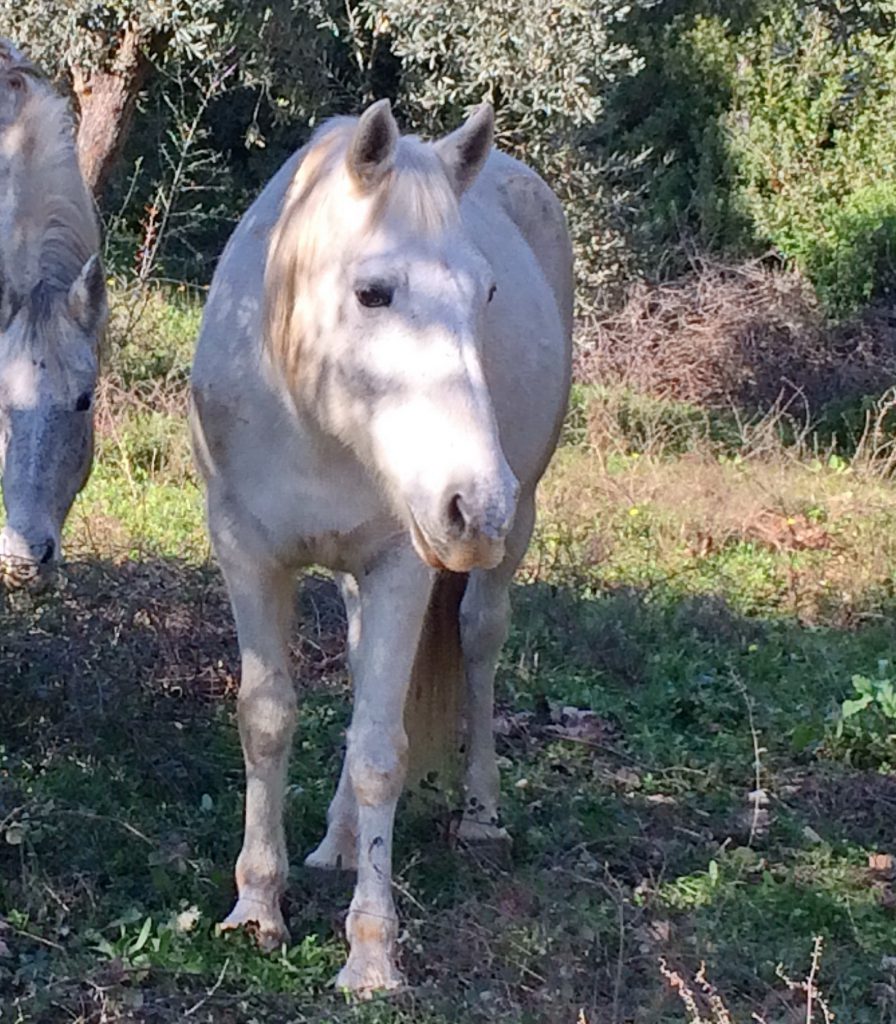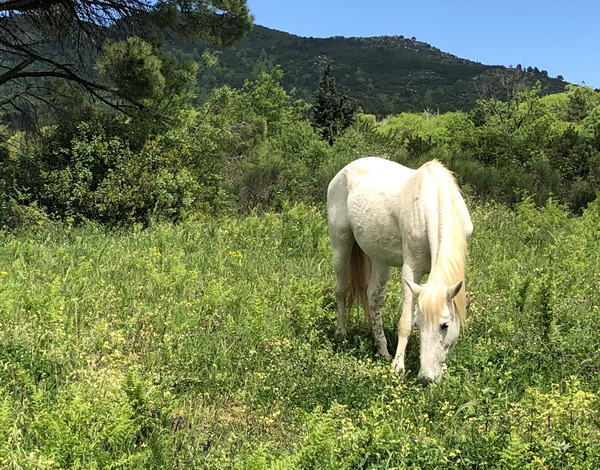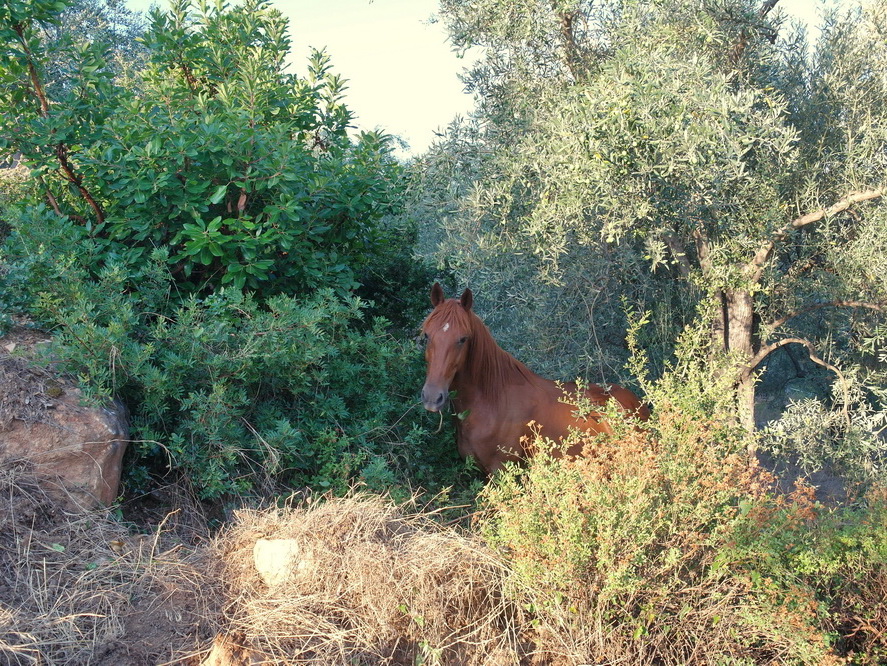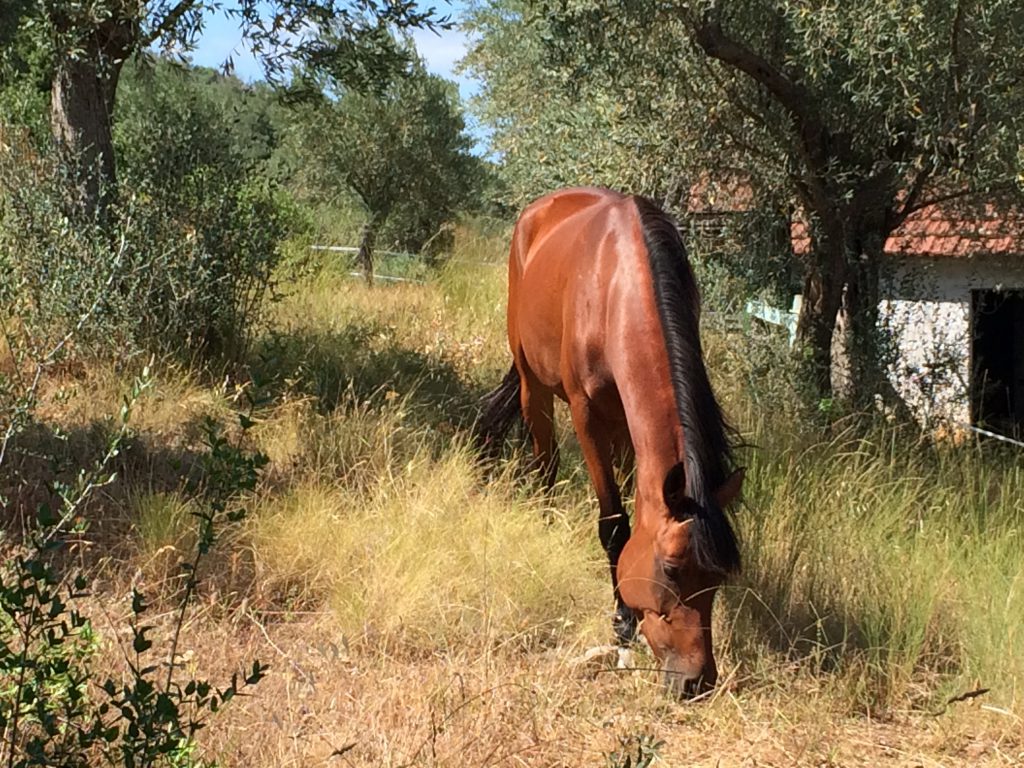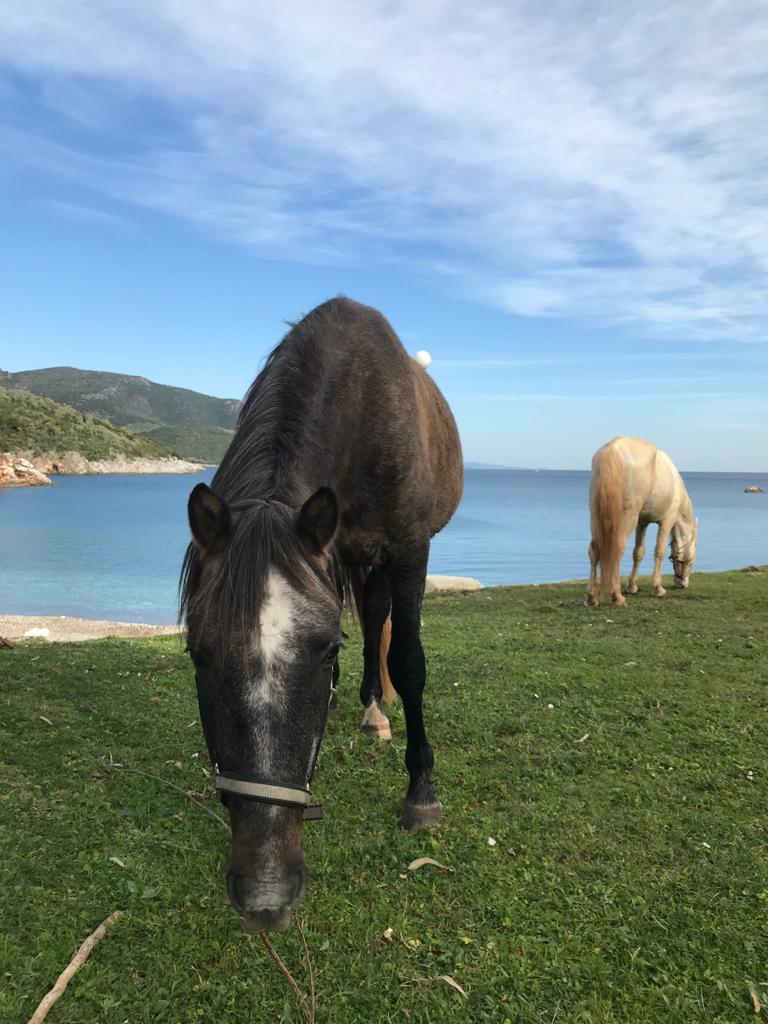
The horses

This is the family tree that Eric Lefort, the former owner of the horses, made for me in 2017. He was from France and he bred Thessalian horses in Katigiorgis, in the South Eastern part of Pilion, for over thirty years.
I had known and loved the horses for years. This breed has a lovely calm and trustworthy character, and the fact that they lived in their family herd for most of their lives makes them into a very coherent herd.
After Eric died in 2019 the horses that are highlighted in yellow came to us. They are the white stallion Kyran and his three elderly white sisters Tolmi, Maroulaki and Jenna. Then Maroulaki’s daughter, the beautiful chestnut Missilou, and her niece Melanouri with her lovely black manes and tail, daughter of Jenna. And finally Prodromos, grandson of Tolmi and son of Kyran.
In our vision, animals are not inferior to humans and they have the same right as us humans to live a life that is as much as possible in accordance with their needs and wishes. In the case of horses this means moving freely through the countryside, grazing the larger part of the day, living in herds of their own choosing.
In today’s world this is mostly not feasible. With our horses we try to get as close as possible to this ideal. We are trying to find enough olive groves in the area to let them graze for nine months a year. The remaining three winter months they stay in one olive grove where we feed them hay, and from where we take them out on grazing walks at least three times a week. Also in the season we often take them out on walks – both we and they enjoy these outings enormously. We make these walks with the whole herd, as this is the way they are most comfortable. We only give some extra vitamin and mineral supplements during the difficults seasons, and raw vegetables or sprouts every now and then. We feed no processed foods or grains.
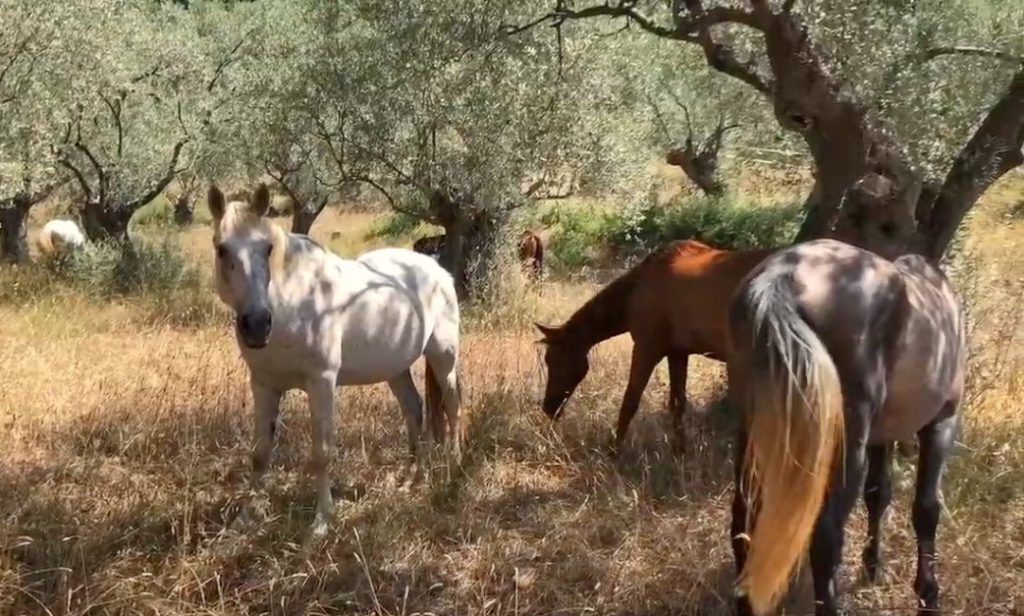
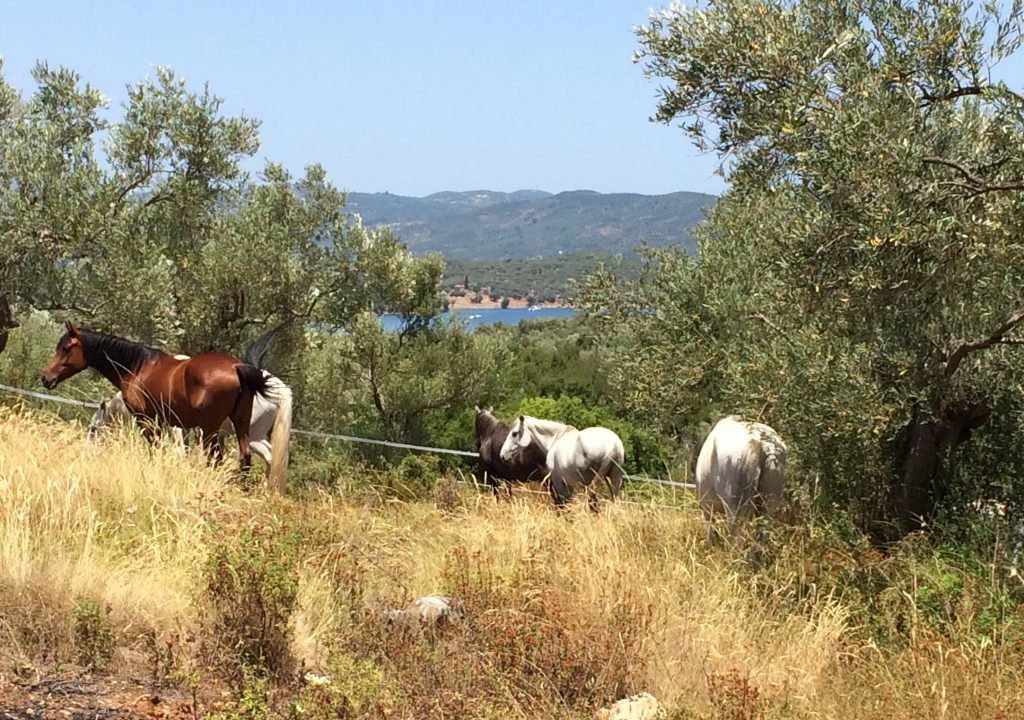
The horses walk barefoot, the farrier comes twice a year for some small adjustments.
We see our horses as companions, we don’t feel they are with us for our pleasure only. So if a horse does not wish to be ridden, it won’t be. They have their own lives to live, and that partly involves us and partly it doesn’t. We love being with them, watching them, feeling the connection, enjoying their interactions in the herd and their individual developments. We consider it a privilege to be able to walk along with them during their lives.
I will now introduce each horse individually. It is sometimes a challenge to watch the horses and experience them without interpreting their behaviour through my human projections. Just seeing them as they are, understanding their behaviour from their perspective – I find this a lovely journey of discovery. So please keep in mind that these observations of the horses are at best temporary ones, as horses develop like all living creatures and descriptions always fall short.


